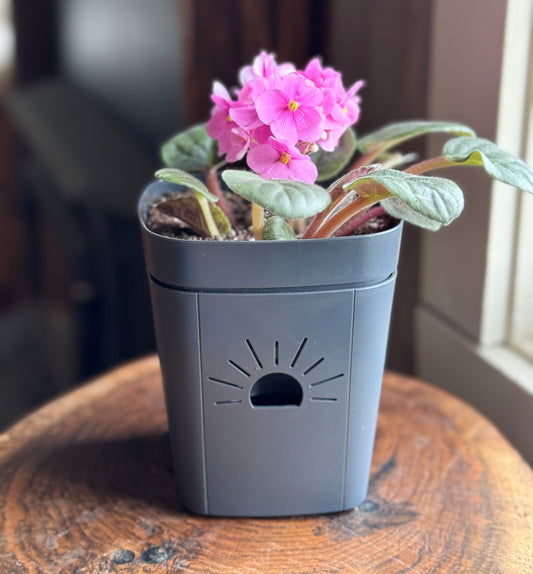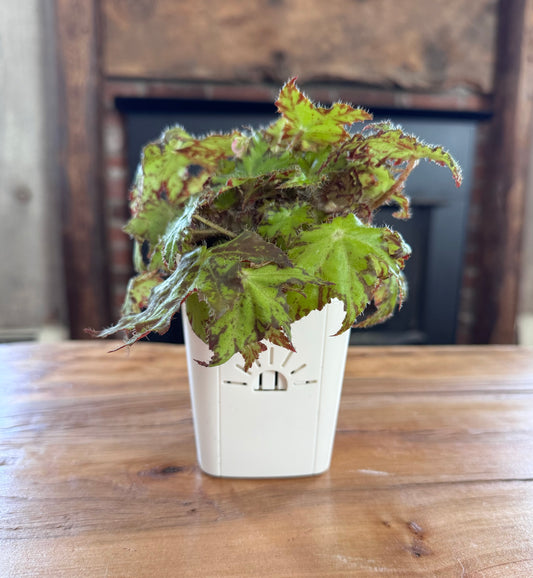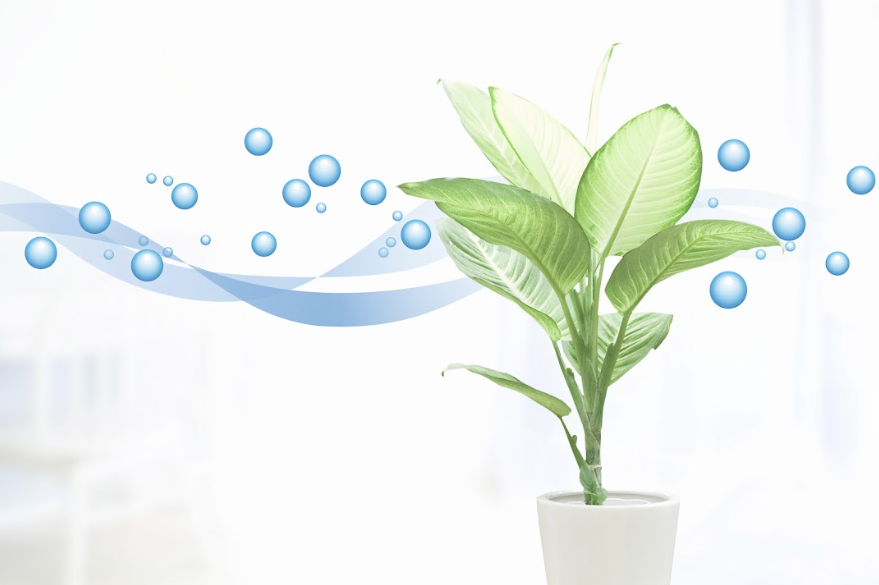Origins
Maranta is a genus of flowering plants belonging to the Marantaceae family. It was named after an Italian physician and botanist named Bartolomeo Maranta, that lived in the 16th century. There are about 40-50 different species of Maranta that are mainly native to Central and South America, as well as the West Indies. All of them have rhizomes and tend to form clumps.
The leaves on these plants are oval, evergreen, and flat during the day but curl up at night, which is why they are sometimes referred to as “prayer plants.” Maranta arundinacea can be used to make the edible starch called arrowroot. Additionally, some species, like Maranta leuconeura, are popular houseplants.
Light
Requirements
Maranta prayer plants are very sensitive to direct sunlight, and too much sun can cause their leaves to become scorched, which may lead to the plant’s death. For this reason, it is important to provide them with bright indirect light for 6-8 hours each day. It is possible for these plants to survive in low-light areas as long as the airflow around them is good.
To avoid overexposing your prayer plant, make sure that you keep it away from windows that receive a lot of afternoon sunlight. Although they can manage in low-light conditions, they tend to do better when given enough light so that they have significant growth throughout their lifetime.
Genus Summary
| GENUS | Maranta |
| COMMON NAMES | Prayer plant, Arrowroot. |
| LIGHT | Medium to bright indirect light |
| WATER SCHEDULE | Naked Root = 14 day |
| WATER REQUIREMENTS | Moist, but not soggy |
| HUMIDITY | High |
| TEMPERATURE | 60-85°F |
| FEEDING | 1x month |
| TOXICITY | Non-toxic to humans and animals |
| PESTS | Spider mites, aphids, thrips, mealybugs, fungus gnats. |
| DISEASES | Phyllosticta, Alternaria (leaf spot), Pythium, Rhizoctonia (root rot) |
| POT | Well draining with a bottom-watering reservoir |
| SOIL | 1 part perlite or sand, 1 part sterilized soil, 1 part sphagnum peat moss or coconut coir, and a pinch of lime. |
| FERTILIZER | 10-15-10 Every two weeks in spring/summer |
| PROPAGATION | Stem cuttings rooted in water, or division |
| PRUNING | Trim in early spring to encourage bushier growth |
| SIZE | 12 inches tall by three feet wide |
Water Requirements
If you are growing your Maranta in a Naked Root planter, you can follow a 14-day watering schedule.
Prayer plants need to be kept in moist soil and should not get overly dry. As light intensity increases, the frequency of watering must increase as well. Make sure your plant’s roots never remain soggy for too long, or it can cause root rot. It is best to use room-temperature water when irrigating a prayer plant. Cold water may shock its delicate system and cause damage.
In wintertime, reduce watering significantly because, during this period, prayer plants go into a dormant stage that requires less hydration than at other times of the year.
Some people say that certain houseplants prefer filtered or distilled water over plain tap water; this is true for prayer plants as well, so keep this in mind when deciding which type of liquid to give your beloved indoor greenery!
Humidity
Maranta plants need high humidity to survive and thrive, ranging from 50% to 60%. To maintain this level of humidity, you can use a humidifier in close proximity or mist the plant lightly with distilled water daily. It is important not to leave your Maranta in standing water for long periods of time as it can create conditions that encourage disease and fungus. Additionally, make sure you are using a pot with a drainage hole at the bottom so excess water can escape easily.
Temperature
When caring for a Maranta plant, pay close attention to the temperature in which it is kept. Ideal temperatures range from 60°F to 85°F, so ensure that your plant is never exposed to any temperatures that are significantly lower or higher than this. Placing them in an area where the temperature drops below 60°F can prove fatal for these plants and should be avoided at all costs. It’s best practice to stick with normal household temperatures when keeping a Maranta alive and healthy.
Toxicity
Maranta plants are non-toxic to humans and animals. This means that these plants can be safely kept around pets and children without any risk of poisoning or harm.
Pests and Diseases
To keep your prayer plant healthy, keep an eye out for common pests such as spider mites, aphids, and thrips. These insects suck the sap from Maranta plants which can cause lesions on the leaves and limit nutrient availability. If you find these pests or notice webs being weaved by them or that the leaves are curling, use neem oil as a treatment.
Fungus gnats also commonly inhabit indoor spaces, and while their adult form does not harm Maranta plants, they do lay eggs that hatch larvae that feed off of root systems. To combat this issue, dilute neem in water and irrigate your plants with it every week to get rid of any eggs or larvae present before they hatch.
Mealybugs are another pest often seen on prayer plants. These tiny white bugs suck plant sap, so if found, remove them using a q-tip soaked in rubbing alcohol, then mist them with insecticidal soap to prevent further infection.
Leaf spot is a fungal disease that can affect prayer-plants in overly wet conditions. It is caused by fungi such as Phyllosticta and Alternaria. Symptoms include water-soaked lesions on the leaves, which can range from small spots to large blotches. If this occurs, it’s important to move your prayer plant away from other plants to prevent the spread of this disease. Neem oil has been found to be effective at killing existing infections. However, for prevention, reducing watering and misting should also be done so that the environment does not become too moist for fungi growth.
Root rot is another common fungal disease caused by fungi such as Pythium or Rhizoctonia, which thrive in temperate and wet conditions. Signs that your plant may have root rot include mushy stems and leaves or wilting of foliage despite adequate watering levels. If you notice these symptoms, reduce watering and misting immediately, as further moisture will only exacerbate the problem. Remove any damaged leaves or stems since they won’t recover and may even contaminate other healthy parts of your plant if left untreated. In more severe cases where there are signs of rotting roots, it’s best to start over with a new plant altogether instead of trying to salvage what’s left – especially when dealing with diseases caused by microorganisms like fungi!
Pot
A well-draining pot with lots of root zone aeration to deter fungal growth. A pot with a bottom watering reservoir will help combat fungus gnats and leaf spot.
Soil
Prayer plants need well-draining soil to be healthy and thrive. A general-purpose houseplant potting soil is a great starting point, but if it does not drain properly, you can mix in some perlite or coarse sand. If you would like to make your own potting mixture for prayer plants, use 1 part perlite or sand, 1 part sterilized soil, 1 part sphagnum peat moss or coconut coir, and a pinch of lime. These ingredients will provide the moisture levels necessary for the plant without allowing it to become waterlogged.
For optimal growth conditions, look for a pH range between 5.5 to 6.0 when caring for prayer plants. Anything higher than this may lead to nutrient deficiencies which could stunt its growth and reduce flowering capabilities significantly too!
Fertilizer
Maranta requires regular fertilizing during the growing season. It is important to pay close attention to the type of fertilizer you are using for your prayer plant. Use a high-quality water-soluble fertilizer with a ratio of 10-15-10. This will provide essential nutrients and minerals that will help keep your prayer plant healthy and thriving. It is especially important not to fertilize in winter as conditions are not conducive to new growth, and too much fertilizer can create conditions for disease.
Propagation
Creating a new prayer plant from cuttings is easy in the spring. It can also be done with seeds, but this isn’t as reliable. Start by taking stem cuttings below the leaf node and dipping them in rooting hormone, then place them in water in low light conditions and change the water every couple of days. When new roots have grown, put the cuttings in shallow pots with soil and keep them moist. When new growth appears, you’ve succeeded in propagating the prayer plant. To propagate by division, take your healthy plants out of their pot and separate the root stems. Plant these in new soil and provide a humid environment. In a few weeks, you’ll have new tropical plants to display in hanging baskets or containers.
Pruning
To ensure the best results when pruning your prayer plant, make sure to use sterilized garden scissors. This will reduce the chances of transmitting any diseases from one plant to another. When you do cut a stem, make sure to clip it right above a leaf node so that new shoots can grow directly below this area. Doing this two or three times per year in fall and early spring before the growing season starts is recommended for achieving a bushier appearance. It is also important to keep an eye out for any signs of disease, such as discoloration or wilting leaves, and remove these parts immediately if they appear on your plants.
10 Striking Varieties and Cultivars
Prayer plants are grown for their beautiful foliage that comes in many shades of green in different patterns. They are long-lived plants and can thrive as indoor plants for thirty years or more. Here are a few of our favorites!
Maranta arundinacea – Commonly called arrowroot or West Indian arrowroot, this plant is native to Mexico and Central America. It grows up to five feet tall outdoors but will stay about 3 feet tall inside. This maranta has bright green leaves. If conditions are ideal, it will produce small white flowers in double clusters. It has a fleshy underground rhizome that stores water, so be careful about watering this variety.
Maranta leuconeura Erythroneaura – Also known as the red maranta, this gorgeous plant is one of the easier varieties to find in garden centers. It has large oval-shaped leaves with bright red veining in a fishbone pattern. The middle of each leaf has a lime green stripe that looks like a zig-zag or zipper. This variety is happy with bright indirect light and soil about as wet as a squeezed-out sponge.
Maranta leuconeura var. Erythroneura’ Lemon Lime’ – The Maranta Lemon Lime variety of the Red Maranta subspecies has light and dark green shades with yellow and green-tinged veins. It is often confused with the Maranta Marisela variety, which has similar foliage but may vary in its coloration. Both of these types of Marantas can survive in low humidity conditions, remaining healthy even at humidity levels below 40%.
Maranta leuconeura var. Kerchoveana – Commonly known as Green Maranta, this is one of the most popular plants for houseplant enthusiasts. It has a light green color with dark splotches on either side of its midrib. This type of Maranta can be used as a hanging plant. However, in lower heat and humidity conditions, the stems can tend to spread out, with the possibility of the leaves losing their color contrast in low-light environments. It grows 12 inches tall when mature and can spread to around three feet wide.
Maranta leuconeura var. Massangeana – The Black Maranta is not as widely available as its red and green relatives, but you can find it for sale online. Its leaves have silver veins, and the midrib is pale green, with the outer third of the leaf blade being so dark green that it appears black. This variety of prayer-plants is most closely related to the wild species Maranta massangeana. When it first grows, the leaves may not feature any black markings, but this can be rectified by experimenting with different levels of light.
Maranta leuconeura var. Massangeana’ Silver Band’ – This black Maranta cultivar has pale silver and green markings that are outlined with a darker halo. This type of plant is delicate and can be affected by fertilizer or salt accumulation, so it’s best to use organic fertilizer or diluted synthetic fertilizer and distilled water when caring for it. An advantage of this variety is that it has low contrast in its coloring, so it can be exposed to bright, indirect light without fading. It grows 12 inches tall and three feet wide when mature.
Maranta leuconeura var. Massangeana’ Cat Mustache’ – Cat Mustache is a newly identified variety that is a combination of black Maranta and silver band. It has faint black markings, and the silver appears like small leaves extending from the midrib. Its appearance is similar to a mustache with pendulous whiskers. The black markings will be more distinct if this plant is grown in less bright light, and the contrast will be so low that it will look like a silver band. If you are looking for a unique and uncommon plant to care for, then Cat Mustache is an excellent choice.
Maranta leuconeura var. Kerchoveana’ Variegata’ – Commonly called Beauty Kim, this is a Green Maranta cultivar that stands out due to its cream-colored blotches. These blotches can range from small to large, and a special reddish-purple color may appear on a young leaf. In addition to white spots, it also has dark green patches along the mid-rib. This variety of prayer plant enjoys high humidity but not wet leaves, so misting or greenhouse conditions should be avoided. Additionally, it is sensitive to light and must be kept away from direct sunlight to prevent its leaves from becoming crispy.
Maranta cristata – This variety used to be called Maranta bicolor. It has small leaves with a long oak-leaf-shaped silver patch all along the mid-rib. Outside of the silver patch are dark green spots. The other edge of the leaf is medium green. New leaves grow in lime green. The overall effect is a mass of different greens for a unique look. It prefers medium indirect lighting and is sensitive to harsh fertilizers, so dilution is a good idea. It grows 12 inches tall and up to three feet wide.
Maranta arundinacea ‘Variegata” – The Variegated Arrowroot is a newer, decorative variety of the Maranta genus. It can grow to be up to 3-6 feet tall in a large pot and has an upright stem with sword-shaped leaves. The individual leaves have light green and white blotches and stripes. This cultivar requires brighter lighting than the plain green Maranta and is a fan of temperatures over 70°F.
Summary of Maranta Plant Care
Keep your Maranta in bright indirect light and provide high humidity. Keep the soil continually moist but not soggy. Soil about as wet as a squeezed-out sponge is ideal. Keep the temperatures above 60° at all times and fertilizer during the spring and summer. Use purified water when irrigation and use a well-draining potting mix.





 Verified Buyer
Verified Buyer









